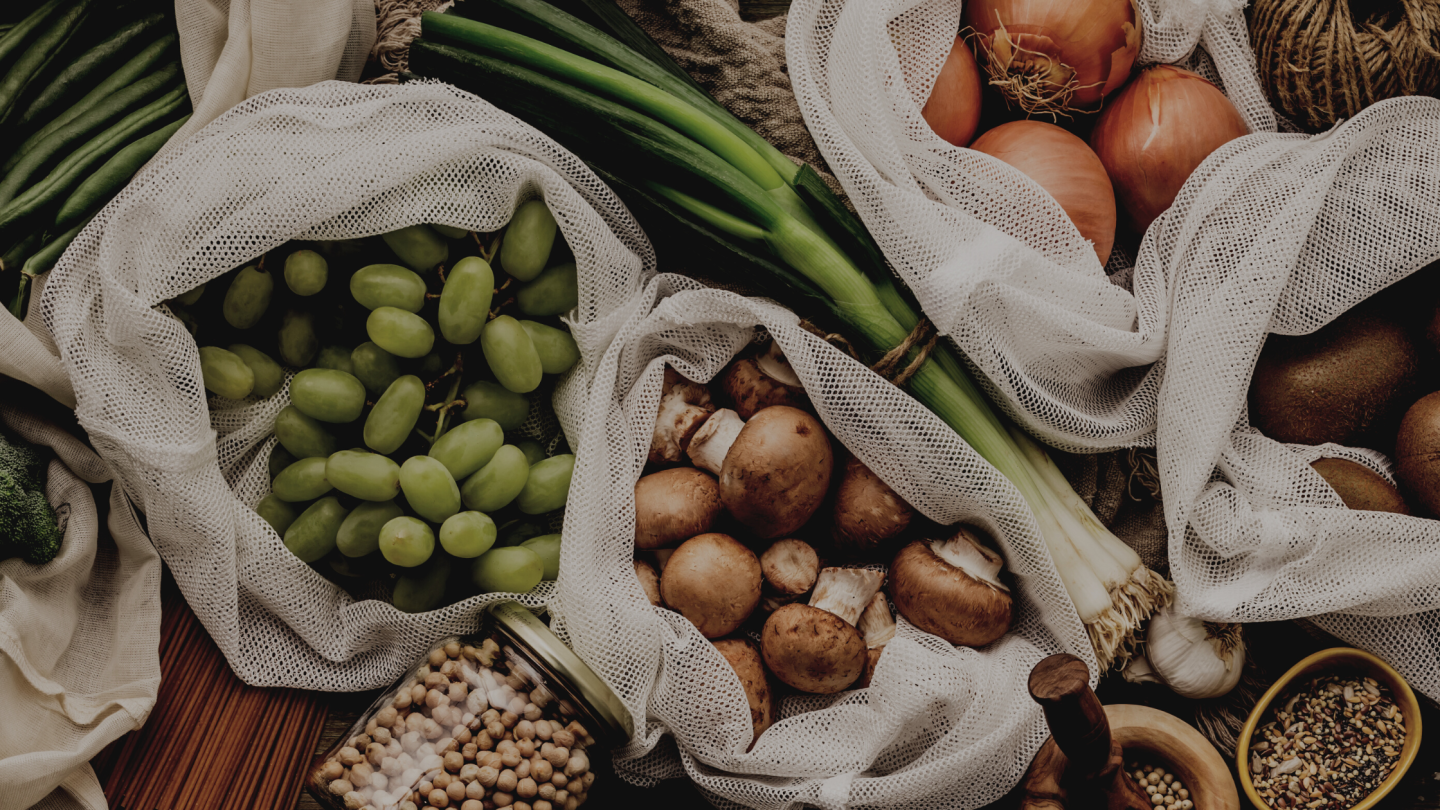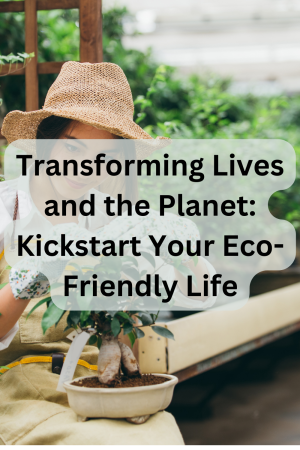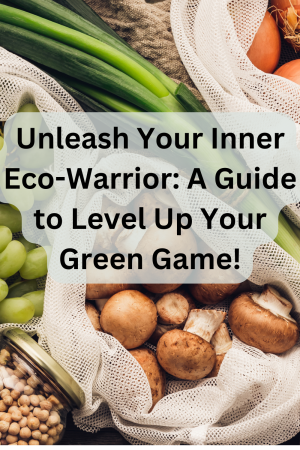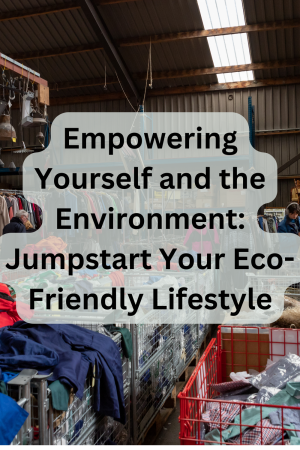
In a world where environmental concerns are becoming increasingly critical, individuals are awakening to the importance of creating a sustainable life. The decision to embark on a sustainability journey is not only a personal choice but a powerful contribution to the collective effort towards a greener and healthier planet. This comprehensive guide aims to empower you with the knowledge and actionable steps needed to initiate and sustain your journey towards a more eco-conscious lifestyle.
Section 1: Understanding Sustainability
1.1 Definition and Importance of a Sustainable Life
- What is Sustainability?
- Sustainability is the practice of meeting the needs of the present without compromising the ability of future generations to meet their own needs. It involves making choices and taking actions that consider the long-term impact on the environment, society, and the economy. Sustainability seeks to balance economic development, social equity, and environmental stewardship to create a harmonious and resilient future.
- Why Sustainability Matters?
- Sustainability is important for several reasons, encompassing environmental, social, and economic aspects. Here are key reasons why sustainability is crucial:
- Preserving the Environment:
- Sustainability is essential for preserving the health and balance of the natural environment. It focuses on minimizing negative impacts on ecosystems, reducing pollution, protecting biodiversity, and conserving natural resources.
- Mitigating Climate Change:
- Addressing climate change is a critical aspect of sustainability. Sustainable practices aim to reduce greenhouse gas emissions, transition to renewable energy sources, and promote resilience in the face of climate-related challenges.
- Ensuring Resource Availability:
- Sustainable practices help ensure the availability of resources for current and future generations. By managing resources responsibly, we can avoid depletion and contribute to a more equitable distribution of resources.
- Promoting Social Equity:
- Sustainability emphasizes social equity by addressing issues of poverty, inequality, and social justice. It strives to create inclusive and fair systems that consider the well-being of all individuals and communities.
- Protecting Human Health:
- Sustainable practices contribute to improved air and water quality, reduced exposure to harmful chemicals, and the promotion of healthier lifestyles. This, in turn, protects human health and well-being.
- Fostering Economic Stability:
- Sustainability is closely tied to economic stability. By promoting efficient resource use, reducing waste, and embracing circular economy principles, sustainability contributes to long-term economic viability and resilience.
- Encouraging Responsible Consumption:
- Sustainability encourages responsible and conscious consumption. This involves making informed choices about the products and services we use, considering their environmental and social impact.
- Supporting Biodiversity:
- Sustainable practices aim to protect and support biodiversity. Preserving diverse ecosystems is crucial for maintaining ecological balance, supporting pollinators, and ensuring the resilience of natural systems.
- Ensuring Food Security:
- Sustainable agriculture practices help ensure food security by promoting soil health, efficient water use, and biodiversity in agricultural landscapes. These practices contribute to long-term food production without compromising the environment.
- Meeting Global Challenges:
- Sustainability provides a holistic approach to addressing global challenges such as poverty, inequality, environmental degradation, and the depletion of natural resources. It offers a framework for creating solutions that consider the interconnectedness of these issues.
- Creating Resilient Communities:
- Sustainable practices contribute to the resilience of communities in the face of challenges, whether environmental, economic, or social. By fostering adaptability and resourcefulness, sustainability helps communities thrive in a changing world.
- Meeting Future Generational Needs:
- Perhaps most importantly, sustainability is about meeting the needs of the present without compromising the ability of future generations to meet their own needs. It is an intergenerational commitment to creating a world that can sustain life and prosperity for the long term.

1.2 Global Environmental Challenges
Global environmental challenges are pressing issues that affect the health of the planet, ecosystems, and human well-being. These challenges arise from human activities, natural processes, and the interconnectedness of environmental systems. Addressing these challenges is crucial for the sustainable future of the Earth. Here are some key global environmental challenges:
- Climate Change:
- Cause: Greenhouse gas emissions from human activities, primarily burning fossil fuels and deforestation.
- Impact: Rising temperatures, more frequent and severe weather events, sea-level rise, and disruptions to ecosystems.
- Biodiversity Loss:
- Cause: Habitat destruction, pollution, climate change, over-exploitation of species, and invasive species.
- Impact: Decline in the variety and abundance of species, affecting ecosystems, food security, and human well-being.
- Deforestation:
- Cause: Clearing land for agriculture, logging, and infrastructure development.
- Impact: Loss of biodiversity, disruption of ecosystems, release of stored carbon, and contribution to climate change.
- Water Scarcity:
- Cause: Over-extraction of water, pollution, climate change, and inefficient water use.
- Impact: Limited access to clean water, ecosystem degradation, and conflicts over water resources.
- Air Pollution:
- Cause: Emissions from industrial activities, transportation, agriculture, and burning of fossil fuels.
- Impact: Respiratory and cardiovascular diseases, environmental degradation, and climate change.
- Plastic Pollution:
- Cause: Improper disposal and excessive use of single-use plastics.
- Impact: Pollution of oceans, harm to marine life, and potential human health risks through microplastic ingestion.
- Land Degradation:
- Cause: Unsustainable agricultural practices, deforestation, and urbanization.
- Impact: Soil erosion, loss of arable land, reduced agricultural productivity, and ecosystem degradation.
- Ocean Acidification:
- Cause: Absorption of excess carbon dioxide by oceans.
- Impact: Harm to marine life, particularly coral reefs and shell-forming organisms, disrupting marine ecosystems.
- Overfishing:
- Cause: Unsustainable fishing practices, including overharvesting and destructive fishing methods.
- Impact: Decline of fish populations, loss of biodiversity, and threats to food security for coastal communities.
- Waste Management:
- Cause: Inadequate waste disposal and excessive production of single-use items.
- Impact: Pollution of land and water, harm to wildlife, and threats to human health.
- Loss of Arctic Ice:
- Cause: Global warming leading to the melting of Arctic ice.
- Impact: Rising sea levels, disruption of ecosystems, and changes in weather patterns.
Section 2: Educating Yourself
2.1 Resources for Learning
Books:
- “Cradle to Cradle: Remaking the Way We Make Things” by William McDonough and Michael Braungart:
- Offers insights into sustainable design and manufacturing.
- “Silent Spring” by Rachel Carson:
- A classic that explores the environmental impact of pesticides and its effects on ecosystems.
- “Doughnut Economics: Seven Ways to Think Like a 21st-Century Economist” by Kate Raworth:
- Explores a regenerative and distributive approach to economics.
- “This Changes Everything: Capitalism vs. The Climate” by Naomi Klein:
- Examines the relationship between capitalism and climate change.
Documentaries:
- “Before the Flood” (2016):
- Narrated by Leonardo DiCaprio, this documentary explores the impact of climate change and potential solutions.
- “The True Cost” (2015):
- Examines the fashion industry’s environmental and social impact.
- “An Inconvenient Truth” (2006):
- A documentary on climate change, presented by former U.S. Vice President Al Gore.
- “Minimalism: A Documentary About the Important Things” (2015):
- Explores the benefits of a minimalist lifestyle for the environment and personal well-being.
- “Our Planet” (2019):
- A nature documentary series narrated by Sir David Attenborough, highlighting the beauty of the natural world and the challenges it faces.
Websites:
- World Economic Forum – Sustainability:
- WEF Sustainability provides insights, reports, and articles on sustainability issues.
- World Wildlife Fund (WWF) – Living Planet Report:
- Living Planet Report offers in-depth information on the state of the planet’s biodiversity.
- United Nations Sustainable Development Goals (SDGs):
- UN SDGs outline global goals for a more sustainable and equitable world.
- Environmental Protection Agency (EPA):
- EPA Sustainability provides resources on sustainable practices and environmental protection.
- GreenBiz:
- GreenBiz offers news, research, and resources on sustainable business practices.
- Local Environmental Organizations
- Look in your local organizations to see how you can get involved!

Section 3: Setting Your Sustainability Goals
3.1 Identifying Personal Values: Ways to Start a Sustainable Life
- Reflecting on Values and Prioritizing Goals
- The path to being more sustainable can be very overwhelming. It’s important to remember that changes do not happen overnight. Small changes still make a difference. This is progress not perfection!
- Write down some of your personal values and based on those decide which sustainable goals suit you best.
3.2 Types of Sustainability Goals
- Reducing Environmental Footprint
- Conserve Energy:
- Turn off lights and electronic devices when not in use.
- Switch to energy-efficient appliances and use LED bulbs.
- Consider using a programmable thermostat to regulate heating and cooling.
- Try natural light instead of lightbulbs when possible
- Reduce Water Usage:
- Fix leaks promptly.
- Install water-saving appliances and fixtures.
- Use water responsibly, such as taking shorter showers and turning off the tap when not needed.
- Minimize Waste:
- Practice the 3 Rs: Reduce, Reuse, and Recycle.
- Compost organic waste to reduce landfill contributions.
- Avoid single-use plastics and opt for reusable alternatives.
- Choose Sustainable Transportation:
- Use public transportation, carpool, or bike instead of driving alone.
- Consider hybrid or electric vehicles.
- Plan and consolidate errands to reduce unnecessary trips.
- Support Sustainable Products:
- Choose products with minimal packaging.
- Look for eco-friendly and sustainably sourced materials.
- Support companies with environmentally responsible practices.
- Conserve Energy:
Latest Posts
- Ultimate Guide: Caring for Your Bird of Paradise Plant
- Are Satin Pothos Easy To Care For? Propagation +(Scindapsus Pictus Care)
- Nurturing Growth: A Complete Guide to Successful Plant Repotting
- Transforming Lives and the Planet: Kickstart Your Sustainable Life
- Embracing Sustainability: Simple Ways to Make a Difference
Section 4: Assessing Current Practices
4.1 Environmental Audit
- Evaluating Lifestyle Habits and Identifying Areas for Improvement
- Take time to reflect on your own lifestyle and think about ways you can make a difference. Small changes are still important for creating a sustainable life. Journal about it, talk to your friends about it, make a plan
Section 5: Implementing Small Changes
5.1 Starting Small
- Introduction to Small Changes
- You do not need to make massive changes overnight! It’s more manageable and more sustainable in the long run. I said this before but it’s about progress not perfection!
- Reducing Single-Use Plastics
- Start by buying a quality reusable water bottle, bring your own utensils, bring your own bags.
- Energy Efficiency at Home
- Switch to more efficient light bulbs, use smart power strips, use natural light, etc.
- Mindful Water Usage
- Fix leaks, use a water efficient toilet, fill the dishwasher completely before starting, turn off the faucet when you’re brushing for teeth, and reuse your towels
5.2 Building Sustainable Habits
- Meal Planning for Sustainability
- Eat your leftovers, and try to reduce your food waste, if you can buy local from farmers. Eat seasonal foods.
- In the summer if you have the space, start a garden. Start with one or two plants if you’re new to gardening.
- Eco-Friendly Transportation
- Try to bike and walk when able. If you can’t try to carpool or use public transportation if those options are available to you.

Section 6: Supporting Sustainable Brands
6.1 Conscious Consumerism and Embracing Secondhand and Upcycled Products
- Secondhand Shopping and limiting clothing consumption
- I like new clothes just as much as the next person. If you’re able, try to check out thrift stores every once in a while when on the hunt for a new outfit! Summer rummage sales, estate sales, facebook market place are also a great way to find good items. These are all great ways to transition to a more sustainable life. Good on the wallet too:)
- If you really don’t want to become a thrifter opt for more sustainable clothing brands or only try to buy clothing pieces that will last so you aren’t constantly rebuying similar pieces.
- Avoid fast fashion if possible. I know this is a hard topic because sometimes fast fashion is what you can afford and you shouldn’t feel ashamed about that and if that’s your budget that’s okay but consume mindfully instead of consuming in excess.
Section 7: Engaging with the Community
7.1 Connecting with Local Initiatives
- Exploring Community Opportunities
- Connect with your local community. Find shared garden space, help with local clean ups, get involved in local government/environmental initiatives, teach classes at your library about the importance of self sustainability.
Section 8: Tracking Progress and Celebrating Achievements
8.1 Regular Assessments
- Importance of Regular Assessments and Adjusting Goals
- Remember sustainability is about progress not perfection. Do regular check-ins with yourself about weather or you’re meeting your goals. If you are, that’s great! If you aren’t, that’s okay too. Reflect on ways you can adjust your goals and move forward from there to create your sustainable life.
8.2 Celebrating Milestones
- Recognizing Achievements and Inspiring Others
- Take time to celebrate your achievements. SMALL achievements are big deals and you should celebrate. Do not minimize your progress.
- Lead by example. Your new habits could inspire others to make more sustainable changes. Be willing to share with others
Latest Post
- Ultimate Guide: Caring for Your Bird of Paradise Plant
- Are Satin Pothos Easy To Care For? Propagation +(Scindapsus Pictus Care)
- Nurturing Growth: A Complete Guide to Successful Plant Repotting
- Transforming Lives and the Planet: Kickstart Your Sustainable Life
- Embracing Sustainability: Simple Ways to Make a Difference
Live your Sustainable Life:
Embarking on a sustainability journey is not just a personal commitment; it is a transformative step towards creating a more harmonious relationship with the environment. By following the comprehensive guide you can initiate meaningful changes in their lives, contribute to global sustainability efforts, and inspire positive change in their communities.
Remember, sustainability is a journey, not a destination. Every action, no matter how small, contributes to a more sustainable future. By taking gradual steps and incorporating sustainable practices into your daily life, you can make a meaningful impact and inspire others to do the same. Happy sustainability journey!
